When we conjure images of medieval knights, we often envision them astride magnificent steeds, charging into battle with the thunder of hooves beneath them. These knight’s battle steeds were not just any horses; they were as integral to medieval warfare as the knights themselves. Understanding the types of horses knights rode provides insight into the history of war horses and the pivotal role they played in shaping the outcomes of battles and the society of the Middle Ages.
Refining the Knight’s Battle Charger
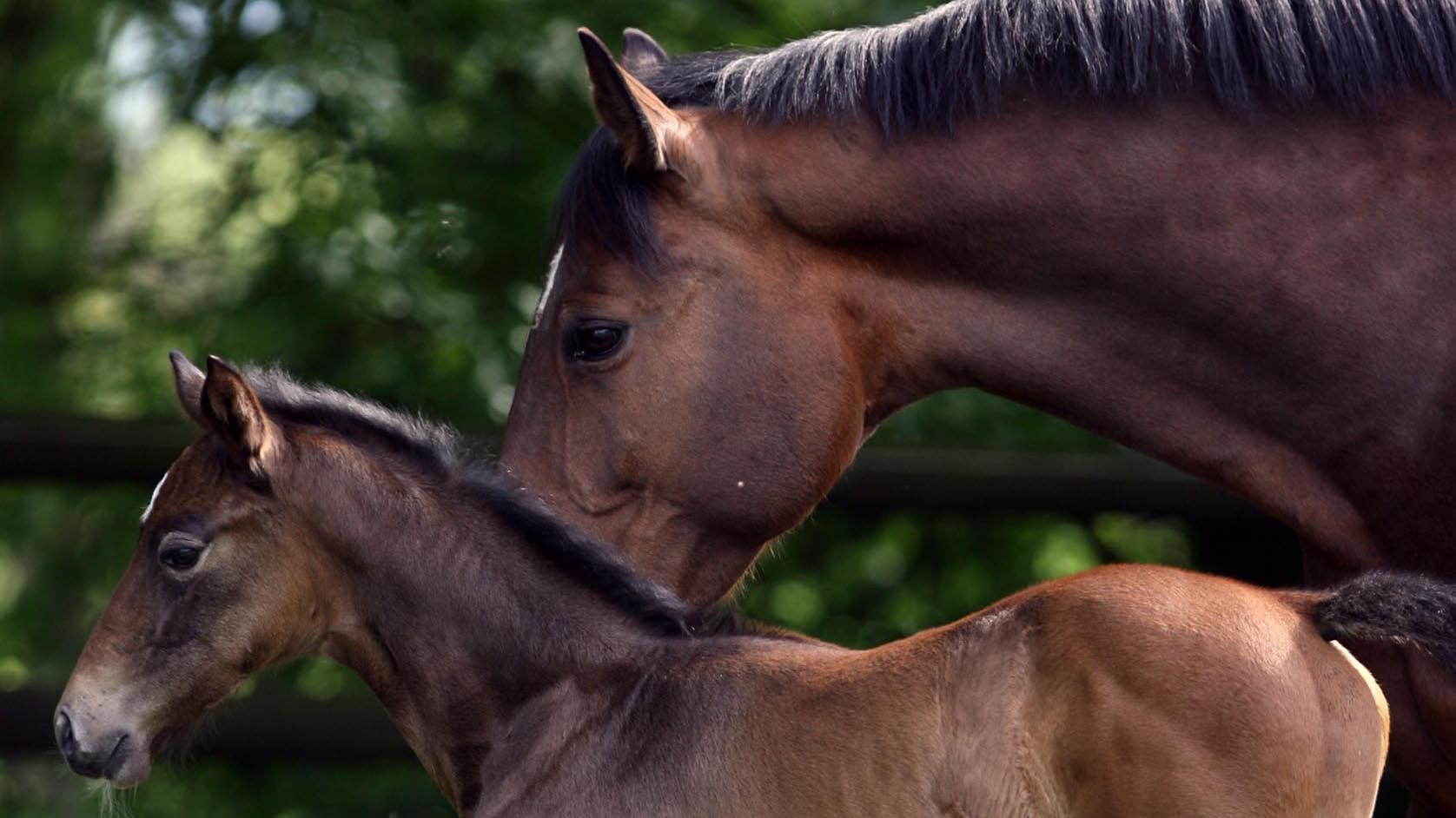
The process of creating the ideal knight’s charger involved a careful combination of selective breeding and intensive care. Aristocrats poured considerable effort into developing these powerful horses, recognizing their potential to influence warfare. The breeding practices of the time were precursors to modern genetics, emphasizing the selection of superior stallions and mares for progeny that would excel in combat.
Key Characteristics for Warhorse Selection
Horse breeders were meticulous in choosing horses that exhibited the necessary physical and psychological attributes for war. They favored equines that were unflappable in the chaos of battle, intelligent, and responsive to intricate commands, understanding these traits were essential for success in conflict.
Heritage and Breeding Practices
Without the advanced genetic knowledge available today, medieval breeders relied on the esteemed lineages of battle-proven horses. They kept detailed records of ancestries, aiming to pair horses that would reinforce strengths and reduce any potential weaknesses.
- Assessment of physical stature and health
- Evaluation of mental fortitude and learning ability
- Consideration of ancestry and the achievements of offspring
Ensuring the Vitality of Combat Horses
For these prized war horses, maintaining their well-being was essential. Their nutritional intake was strictly regulated to ensure they had the vigor and endurance needed. The dedicated care provided by grooms and squires was critical to keeping the horses ready for both training and warfare.
Meeting Dietary Needs
Each horse’s diet was custom-designed to meet its specific requirements, concentrating on a mix of grains like oats and barley, along with hay, augmented by essential vitamins and minerals. The provision of moist feed was a common practice to reduce dust intake and promote better digestion.
Comprehensive Grooming Routines
Systematic grooming served multiple purposes: it was a way to connect with the horse, a method for uncovering potential health issues, and a time to care for the horse’s hooves, which were meticulously cleaned and shod to withstand the demanding battle environments.
Forging a Knight-and-Steed Alliance
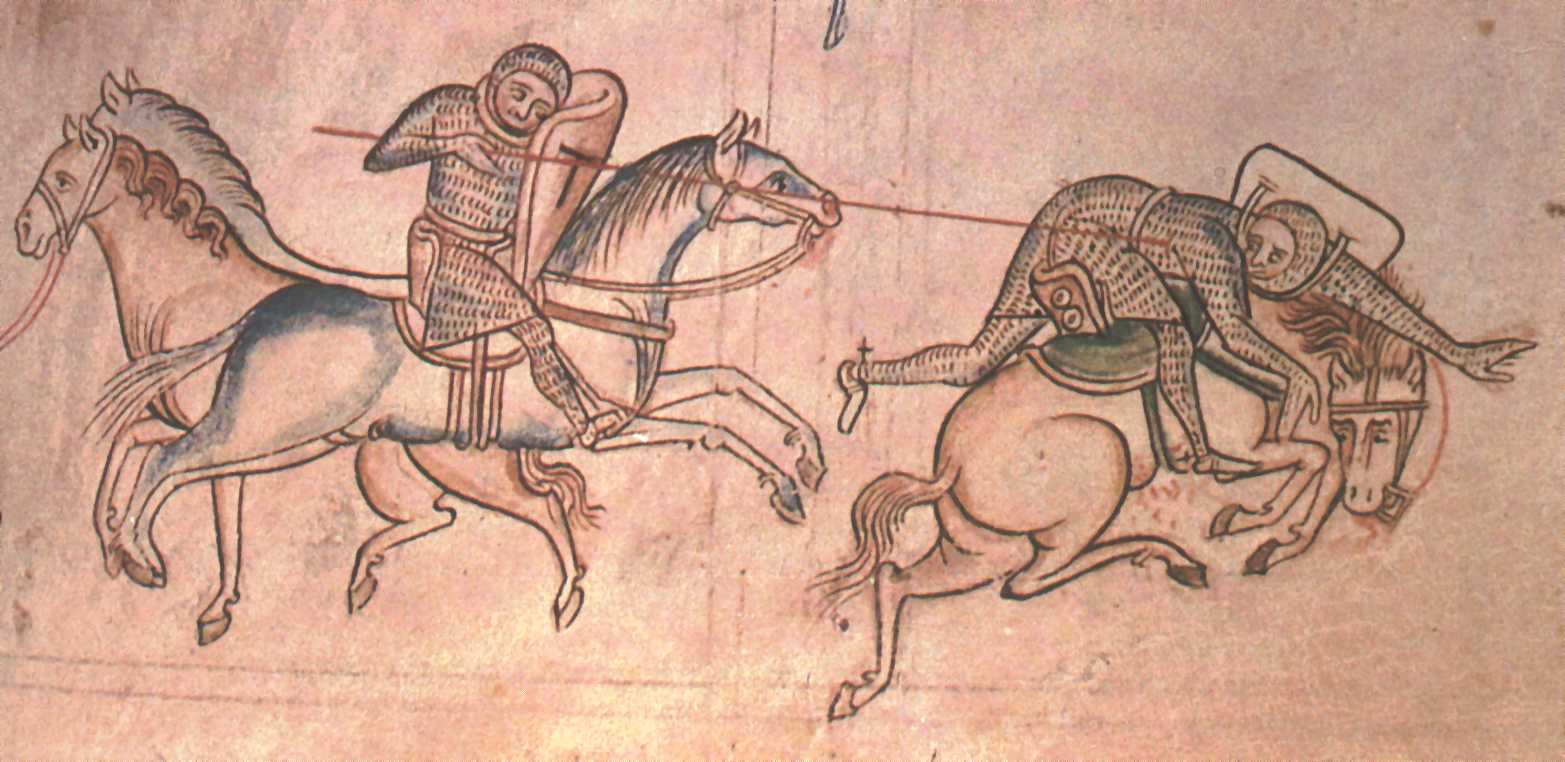
Building a strong connection between a knight and his charger was a gradual process, underpinned by shared training and constant interaction. In the tumult of battle, the trust between them was indispensable. The knight and his steed would spend many hours together, establishing a partnership essential for effective combat operations.
The Foundation of Trust and Cooperation
The development of mutual trust and cooperation was fostered through routine engagements and shared trials. Knights became adept at interpreting their horses’ non-verbal signals, and in turn, the horses became familiar with their riders’ commands and presence.
Joint Training for Combat Preparedness
Training regimens were designed to mimic the conditions of warfare, reinforcing the cooperative dynamic between the knight and his mount. These preparations included tackling obstacle courses, participating in staged battles, and acclimating to the cacophony of war to ensure the horses would remain composed during actual combat.
The Role of the Knight’s Charger in Feudal Society
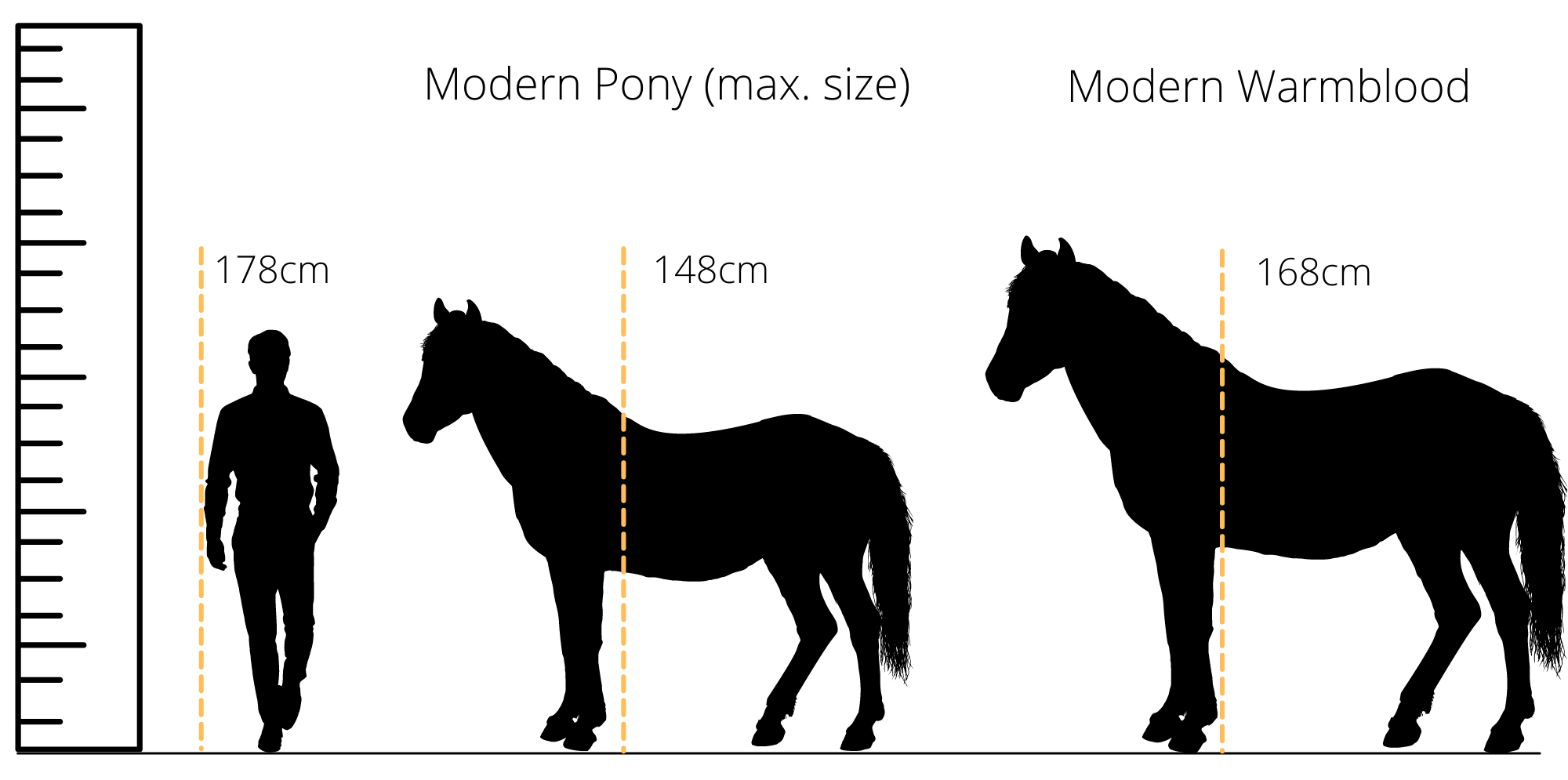
These esteemed warhorses were not only indispensable in warfare but also held a prominent place in feudal society. They were seen as emblems of prosperity and status, often exchanged as high-value gifts or used to cement political alliances and treaties.
Equine Symbols of Elegance and Power
A knight’s possession of a formidable charger was a testament to his societal rank. Public events like tournaments were occasions to exhibit these horses, adorned with elaborate gear to enhance the knight’s image of grandeur.
Significance in Public Displays
In public ceremonies and processions, the knight’s warhorse would be draped in the colors and emblems of his house, symbolizing his heritage and valor. These spectacles allowed the knight-horse bond to be admired by onlookers, reinforcing their esteemed status in the social order.
The Destrier’s Legacy in Medieval Warfare
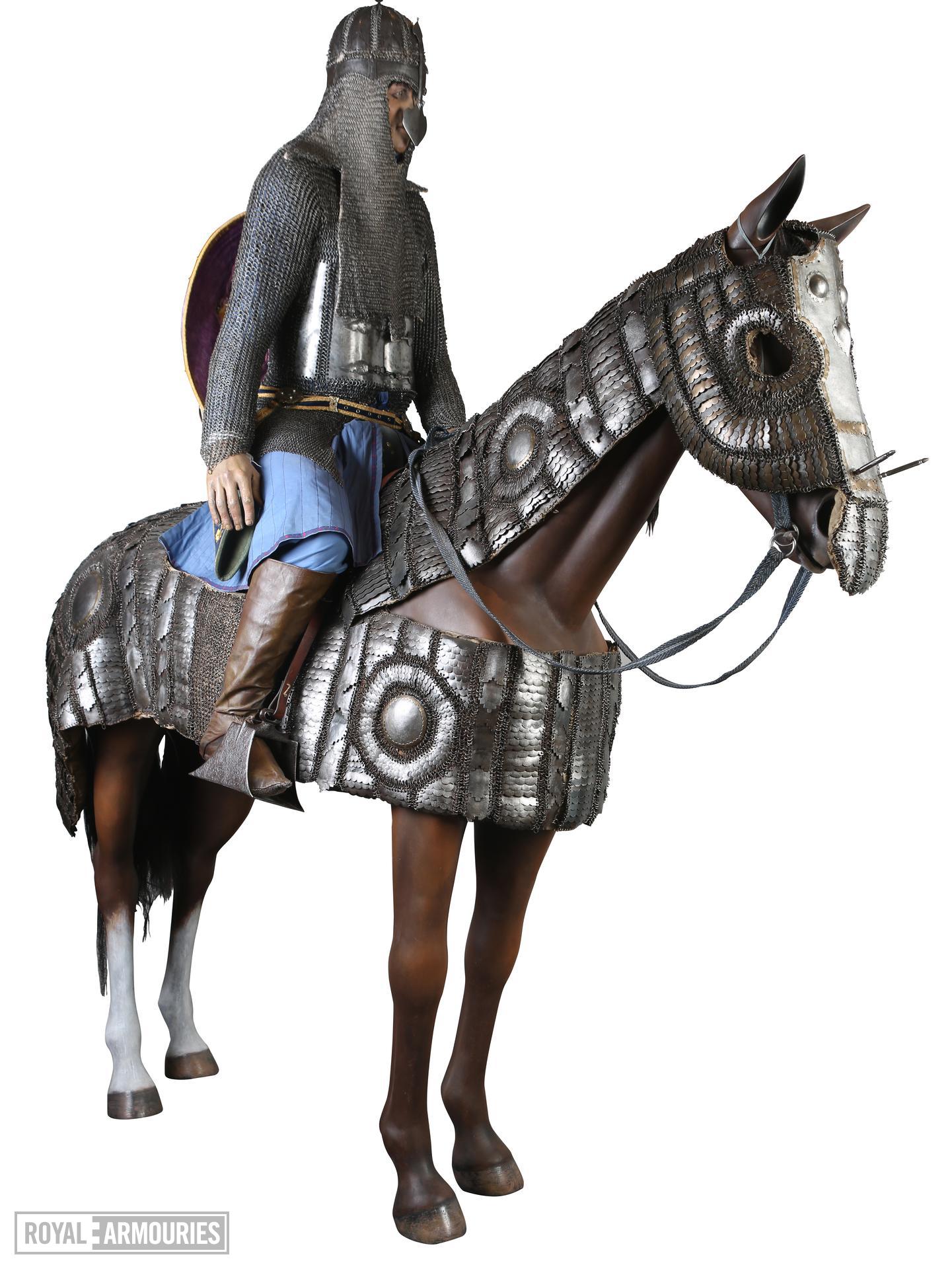
Renowned for their prowess in battle and as symbols of nobility, destriers were the elite mounts of medieval knights. The origin of the term “destrier,” from the Latin “dextrarius,” suggests the prominence of these horses, indicating a steed of high status typically positioned to the right of a mounted knight.
The Selective Process Behind the Destrier’s Superiority
The destrier’s lineage was the result of a deliberate selection process focused on resilience and capability. Royalty and aristocrats invested in breeding programs to develop destrier bloodlines that would prove advantageous in warfare.
The Embodiment of Strength and Obedience
Destriers were distinguished by their impressive build, typically standing 14 to 16 hands tall, and were celebrated for their mental sharpness and obedience even in the most stressful conditions.
Training Destriers for Battle
Warhorse training for destriers was a rigorous affair. It included endurance training to cope with the weight of armor and combat maneuvers essential for battlefield agility. This training elevated the destrier from a mere battle participant to a knight’s strategic partner.
Strategic Breeding for Warhorse Excellence
Destrier breeding was a strategic operation aimed at enhancing desirable traits such as strength and agility. It was conducted with intention, using a deep understanding of equine lineage to cultivate these attributes.
Psychological Understanding and Partnership
Recognizing the psychological aspects of destriers was as important as their physical training. The bond between knights and their mounts was marked by deep mutual respect and a keen understanding of shared communication in combat.
Outfitting Destriers for Combat
Destriers were equipped with armor that protected and represented their knight’s heraldry. The design of the armor was functional, providing protection while maintaining the horse’s agility necessary for combat.
The Destrier’s Influence on Battle Strategy
Destriers revolutionized medieval military strategy. With their ability to disrupt enemy formations, they were a decisive factor in the outcome of battles, reshaping military tactics of the era.
Remembering the Destrier in History
Though centuries have passed, the destrier remains an iconic figure in the annals of history, celebrated in art and literature as a symbol of the sacred knight-and-steed partnership that influenced wars and national destinies.
Destrier’s Role Among Other Medieval Cavalry Breeds
While the destrier was a cornerstone of medieval cavalry, it was complemented by other equine breeds such as the swift coursers and versatile rounceys, which played specialized roles on the battlefield, enhancing the overall might and versatility of the mounted forces.
Exploring Heavy Cavalry Mounts: Beyond the Destrier
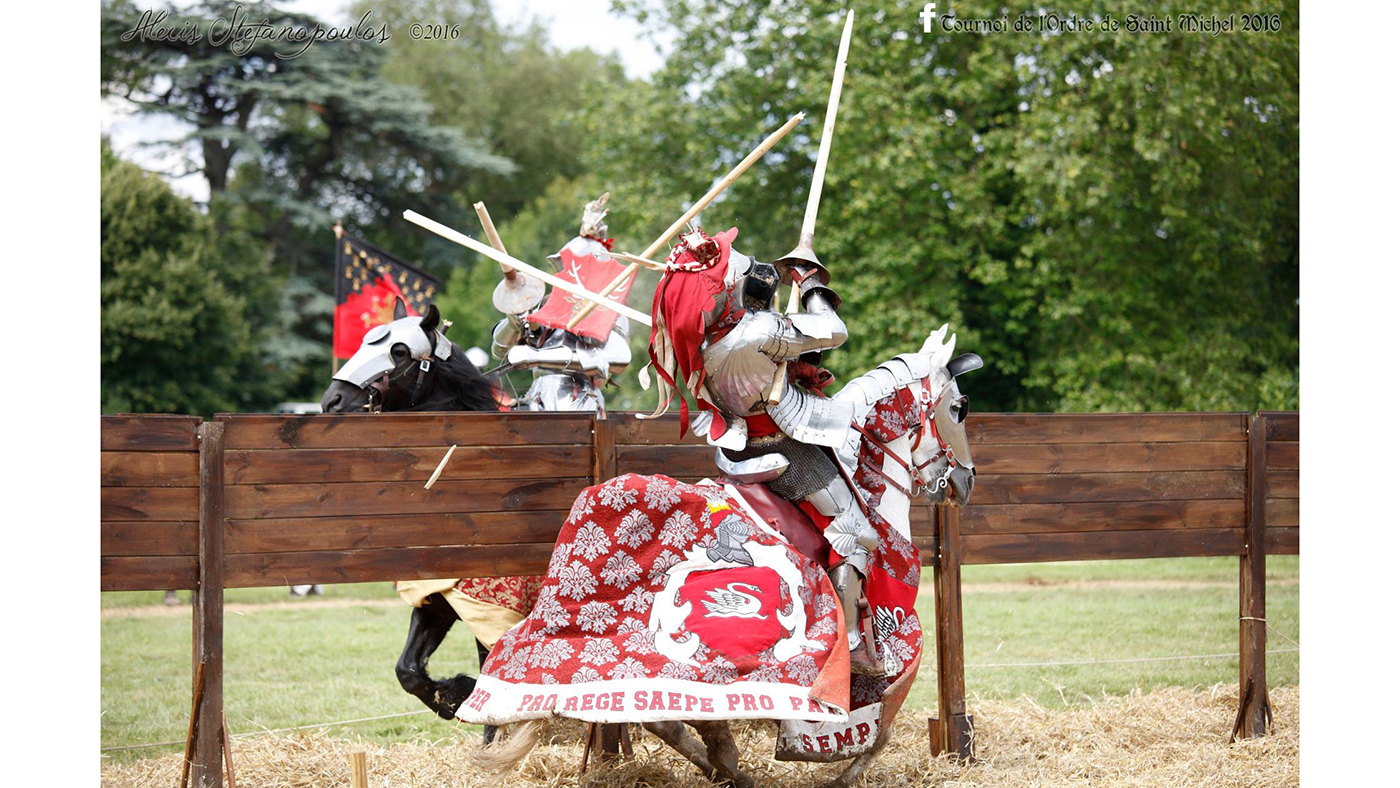
The agility and swiftness of charger horses gave the heavy cavalry a dynamic advantage during medieval confrontations. These energetic mounts were specifically bred for quick offensives and rapid retreats, proving crucial in swinging the momentum of battles. Their unique attributes allowed them to bear an armored knight’s weight while delivering high-speed performance, a combination vital to the heavy cavalry’s efficacy.
Defining Charger Horse Characteristics
Charger horses were recognized for their slender build and speed, distinguishing them from the more robust destrier breed. With their lighter physique, chargers could achieve greater acceleration, essential for the battlefield’s fast-paced engagements.
- Designed for agility and quick response
- Skilled in navigating through combat’s disarray
- Endurance to withstand the duration of lengthy skirmishes
Strategic Battlefield Maneuvers
Charger horses were the cornerstone of strategic army positions, often placed on the wings to utilize their agility for flanking maneuvers. Their capacity for repeated charges was a key component in the tactics employed by military commanders.
Specialized Training for Combat Readiness
Chargers underwent a tailored training regime that amplified their inherent capabilities. Knights and squires dedicated themselves to enhancing the mounts’ battlefield reactions through a regimen of exercises focused on endurance and agility, simulating the chaos they would encounter in warfare.
- Stamina conditioning for protracted confrontations
- Maneuverability exercises for tactical evasion
- Simulated combat to habituate to the clamor of war
Adaptations in Armor and Tack
Chargers were outfitted with lighter armor to preserve their swift movements, providing protection while retaining flexibility for combat maneuvers. The equipment was strategically chosen to align with the knight’s combat style, ensuring seamless execution of battlefield commands.
Redefining Charger Horses in Warfare History
While often overshadowed by the destrier, the charger horse’s role in warfare was pivotal. Historical records attest to their critical presence in numerous military victories, and artworks from the period frequently depict them as a testament to the valor and swiftness of the knightly cavalry.
The Enduring Impact of Charger Horses
Charger horses represented a leap in military strategy, showcasing the evolution of equine breeding and training to meet the changing needs of combat. Their influence is seen today in equestrian sports that demand the same speed, agility, and partnership celebrated in these historical mounts.
Diverse Origins of Charger Horse Breeds
The charger’s lineage was shaped by a variety of breeds, each contributing specific qualities that enhanced the cavalry’s operational diversity. Through selective crossbreeding, a horse emerged that met the multifaceted demands of heavy cavalry engagements.
The Strategic Significance of Charger Horses
As indispensable components of medieval warfare, charger horses were more than mere mounts; they were strategic assets capable of influencing the outcome of battles. Their blend of agility and strength, carrying knights in heavy armor, created a harmonious balance that played a decisive role in the art of war. While the destrier’s might is often lauded, the charger horses’ contributions to military history are equally noteworthy, deserving recognition for their impact on warfare tactics.
Equine Armor: The Intersection of Practicality and Prestige
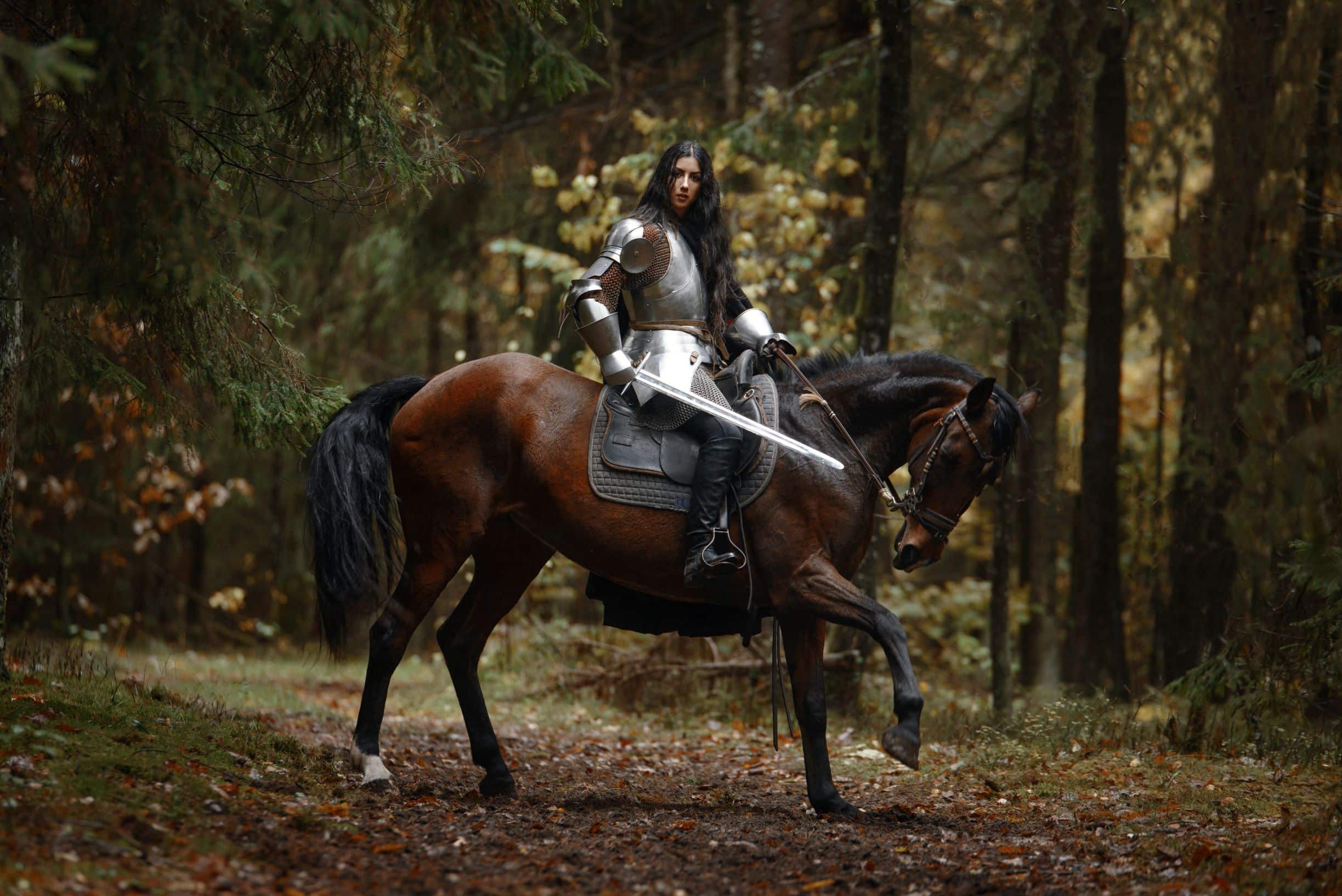
Armor for the knight’s horse was a critical component on the medieval battlefield, serving a dual purpose of protection and representation. It was essential for the horse to be effectively equipped for combat, while the barding also reflected the knight’s wealth and rank.
The Anatomy of Horse Barding
Horse armor, known as barding, consisted of several protective elements crafted to fit the warhorse’s form:
- Peitral: This chest protection thwarted frontal blows
- Flanchards: Side defenses safeguarded the horse’s flanks
- Croupiere: Armor that protected the hindquarters from behind
The Art of Crafting Barding
The production of barding blended metalworking mastery with an understanding of equine movement. Artisans tailored each armor piece to the individual horse, ensuring mobility was not compromised on the battlefield.
Barding Materials and Composition
The barding was forged from various materials selected for their protective qualities and weight:
- Metals like iron and steel provided durability
- Leather offered lighter protection with greater flexibility
- Textiles and padding were used for comfort and to absorb shock
The combination of these materials balanced defense with the necessary agility for war.
The Advancement of Horse Armor Over Time
Barding designs advanced in complexity alongside the evolution of combat tactics. From basic early designs, horse armor transformed, incorporating flexible plates and decorative elements that echoed the knight’s armor.
Essential Fitting and Care of Barding
Effective barding required meticulous fitting and upkeep. Both the armorer and the squire played crucial roles in the maintenance of this equipment, ensuring the horse was always ready for battle.
The Dynamics of Barding: Mobility Versus Protection
Equine armor designers were tasked with providing ample protection without sacrificing the horse’s flexibility and speed. The introduction of articulated joints was a significant innovation, allowing the horse to maintain a full range of motion while armored.
The Deterrent Effect of Horse Armor
Apart from its protective function, barding had a psychological impact on the battlefield. Its impressive appearance could intimidate enemies and embolden allies. Emblazoned with heraldic symbols, the armored steed projected an image of formidable strength and nobility.
The knight and his armored horse formed an imposing presence in warfare, their performance as reliant on the quality and design of the barding as on their combat prowess. The armor for the knight’s horse was thus not just a practical necessity but also a symbol of martial grandeur during the chivalric era.
Distinctive Middle Ages Equine Varieties
During the medieval era, a range of specialized equine breeds emerged, each tailored to the era’s societal and martial demands. These breeds were more than utilitarian animals; they were woven into the tapestry of medieval life, influencing economics, status, and warfare.
Spotlight on Friesians and Andalusians
The striking Friesian, hailing from the Netherlands, was known for its versatility. As adept in war as in peacetime spectacles, its calm demeanor suited both the battlefield’s intensity and the pomp of ceremonies. The Andalusian, from the Iberian Peninsula, was equally esteemed for its combination of vigor and manageability, excelling in both combat and classical dressage.
- Both breeds were renowned for their appearance and versatility
- Friesians and Andalusians were celebrated for their agility and trainable nature
- These horses were symbols of nobility and excelled in their roles
Contributions of Other Prominent Breeds
Throughout the Middle Ages, an array of breeds arose to meet specific needs. England’s Shire horse was a robust laborer, capable of hauling hefty loads, while the Arabian stood out for its swift and enduring qualities, often utilized for message delivery and light cavalry tasks.
- Shires were indispensable for heavy-duty tasks and warfare support
- Arabians were valued for their speed and endurance in various roles
- Regional breeds evolved in response to local needs and conditions
The Percheron’s Dual Purpose
The French Percheron, from the Perche province, was a draft breed known for its strength and unexpectedly graceful movements. These horses were not only powerful workers but also served valiantly in combat when called upon.
- Percherons were notable for their brawn and elegance
- These horses were acclaimed for their cooperative spirit and adaptability
- They fulfilled both agricultural and martial functions effectively
Medieval Breeding: An Era of Equine Tailoring
In the Middle Ages, breeding practices emphasized the cultivation of traits for specific purposes, leading to the refinement of breeds for a variety of roles, from the steadfast plow horse to the nimble courser.
| Breed | Primary Function | Key Traits |
|---|---|---|
| Friesian | Ceremonial and Warfare | Stately, black coat, adaptable |
| Andalusian | Combat and Dressage | Muscular, smart, graceful |
| Shire | Labor and Warfare Support | Large, strong, amiable |
| Arabian | Reconnaissance and Light Cavalry | Durable, fast, hearty |
| Percheron | Workhorse and Combatant | Hefty, gentle, diligent |
The dedication to breeding these distinctive horses over generations left a profound legacy, one that has transcended the medieval period to shape contemporary equestrian pursuits.
Training and Equipping Tournament Chargers
The pageantry of medieval tournaments was incomplete without the specially trained and equipped chargers that carried knights in jousts. These chargers were selectively bred to exhibit traits for tournament excellence, such as the destrier’s power and a predisposition for linear speed, critical for a solid jousting charge.
Enhancing Tournament Charger Capabilities
Breeders of tournament chargers sought to instill a composed demeanor in these equines, necessary for withstanding the clamorous environment of the lists, as well as a forceful impetus to dislodge adversaries. These chargers were expected to perform with the same level of bravery and steadiness that would be seen in battle.
Specialized Tournament Training
Training chargers for tournaments involved a detailed regimen that fostered a tranquil yet intrepid nature. Key to this preparation was acclimating the horses to potential distractions, such as the metallic glint of armaments and the resounding blares of fanfare, to ensure focus during competitions.
- Familiarization with the intense sounds and pageantry of events
- Drills to master the direct gallop toward the adversary
- Conditioning to enhance the charger’s vigor and thrust
Tournament Tack and Protection
Chargers’ gear for tournaments was meticulously chosen for function and form. Saddles had to afford knights maximal stability, while bridles and reins were tailored for precision during the charge. Protective trappings such as chamfrons, safeguarding the charger’s head, were standard to avert harm in the event of collisions.
Integral Duties of the Squire
The squire’s responsibilities extended beyond the care of jousting chargers to include ensuring their equipment was battle-ready and well-maintained. A charger’s appearance and readiness were a testament to the squire’s attentiveness and, by extension, reflected the knight’s prominence.
- Maintenance of optimal gear condition
- Support in daily training routines
- Care for the charger’s well-being during events
Regional Charger Preferences
Regional differences influenced the selection of charger breeds for tournaments, with English knights often favoring the English Destrier for its agility and composure. On the continent, larger breeds like Flemish or Spanish horses were prized for their size and the power they brought to the joust.
Legacy of Tournament Chargers
The legacy of tournament chargers is evident in contemporary equestrian sports. The traits that were honed for tournaments have been inherited by today’s competition horses, illustrating the lasting impact of medieval charger breeding and training practices.
| Region | Charger Breed | Distinguishing Qualities |
|---|---|---|
| England | English Destrier | Agility, steadfastness, strong charge |
| Continent | Flemish/Spanish Charger | Majestic presence, resilience, forceful impact |
Advancements in Medieval Warhorse Development
As combat strategies advanced during the Middle Ages, the training of warhorses adapted to meet the increasingly complex demands of warfare. The focus was on crafting a reliable and adaptable warhorse that could perform in the high-pressure environment of the battlefield, requiring a thorough grasp of horse behavior and physical capabilities.
Progressive Training Practices
Medieval equine trainers were pioneers in developing methods to enhance the warhorse’s physical abilities, such as strength and dexterity. They introduced obstacle courses that replicated the challenging conditions of combat landscapes, conditioning horses to traverse difficult terrains smoothly.
- Creation of training courses reflecting the combat environment
- Exercises to build muscular power and endurance
- Dexterity drills for improved tactical movement
Focus on Psychological Steadiness
The psychological training of warhorses was given equal importance to their physical training. Techniques were implemented to acclimate horses to the intense stimuli of warfare, such as the sounds of artillery and the presence of soldiers, ensuring a steadfast demeanor during confrontations.
- Acclimation to the din and unpredictability of war
- Exposure to the elements of infantry and combat
- Training for concentration under duress
Refinement of Combat Synergy Between Horse and Rider
A synchronized partnership between the knight and his mount was essential for executing strategic maneuvers in the fray of battle. Training emphasized the fine-tuning of non-verbal communication, fostering a shared language for prompt and accurate responses to battlefield commands.
Silent Command Techniques
The ability to interpret and execute non-verbal signals was a cornerstone of the training regimen. Knights were trained to guide their mounts using subtle cues, relying on the horses’ sensitivity to body language for discreet and efficient command relay.
Cultivating Instinctive Reactions
Warhorses were conditioned to develop instinctual reactions that mirrored the knight’s tactical needs, a rapport built on consistent and systematic training that reinforced their synergistic relationship.
Differentiation of Equine Combat Functions
With the diversification of warhorse duties, tailored training programs were designed to align with each horse’s combat role. This approach ensured a structured and effective cavalry, with horses exhibiting distinct skills that enhanced the collective strength and tactical diversity of the unit.
| Type of Warhorse | Training Emphasis | Role in Warfare |
|---|---|---|
| Heavy Cavalry Destrier | Resilience and force | Leading charges |
| Swift Courser | Agility and stamina | Quick maneuvers and encirclement |
| Adaptable Rouncey | Compliance and adaptability | Supporting various combat scenarios |
Warhorse training in the Middle Ages evolved into an intricate craft, blending physical conditioning with mental fortitude to produce equine warriors ready for the challenges of medieval combat. These developments not only improved the effectiveness of cavalry but also served as a precursor to contemporary horse training disciplines, showcasing the historical significance of medieval equine preparation.
If you’re a horse enthusiast or have an interest in the historical aspects of horse riding, you may find yourself curious about the steeds of the past. For example, have you ever wondered about the gallant horses knights rode into battle? Our article on what horses Vikings rode offers a glimpse into the type of horses that were ridden by these Norse warriors, which may provide some insights into the equine choices of medieval knights. Meanwhile, the mechanics and beauty of equine locomotion can be explored in our piece on how horses run. And for a dive into the American frontier, check out our article on what type of horse most cowboys ride, which perhaps draws parallels with the breeds favored by knights of old.
Conclusion: The Legacy of Medieval War Horses
The legacy of medieval war horses is enduring, with the destrier breed, charger horse characteristics, and the very concept of the knight’s battle steed etched into history. From the thunderous charges of heavy cavalry mounts to the precision and pageantry of jousting horses, these equine companions were pivotal to the knight’s martial prowess. Though the days of knights and their steeds have long passed, the fascination with these noble animals and their role in shaping the history of war horses continues to captivate us to this day.



